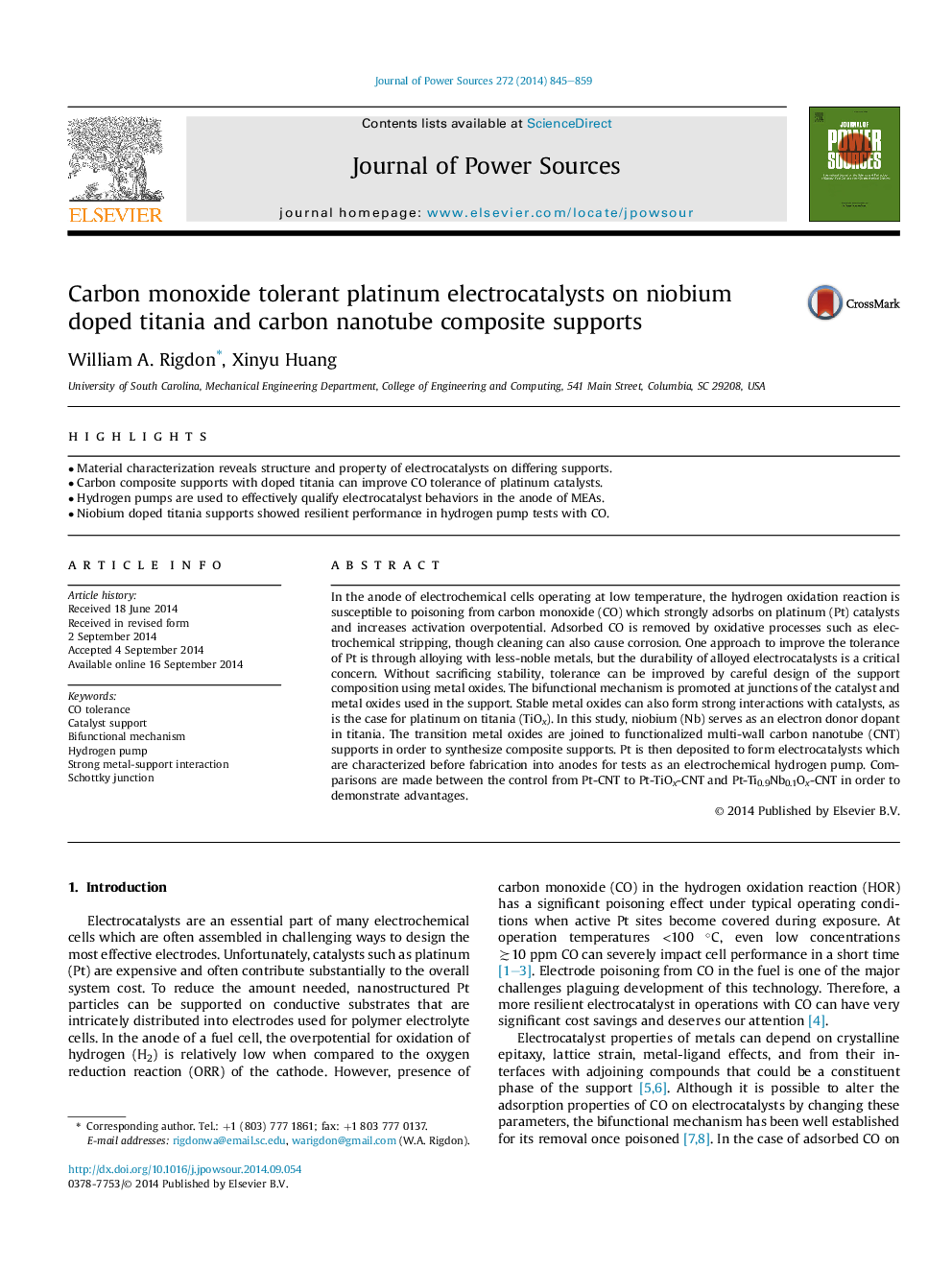| Article ID | Journal | Published Year | Pages | File Type |
|---|---|---|---|---|
| 1283978 | Journal of Power Sources | 2014 | 15 Pages |
•Material characterization reveals structure and property of electrocatalysts on differing supports.•Carbon composite supports with doped titania can improve CO tolerance of platinum catalysts.•Hydrogen pumps are used to effectively qualify electrocatalyst behaviors in the anode of MEAs.•Niobium doped titania supports showed resilient performance in hydrogen pump tests with CO.
In the anode of electrochemical cells operating at low temperature, the hydrogen oxidation reaction is susceptible to poisoning from carbon monoxide (CO) which strongly adsorbs on platinum (Pt) catalysts and increases activation overpotential. Adsorbed CO is removed by oxidative processes such as electrochemical stripping, though cleaning can also cause corrosion. One approach to improve the tolerance of Pt is through alloying with less-noble metals, but the durability of alloyed electrocatalysts is a critical concern. Without sacrificing stability, tolerance can be improved by careful design of the support composition using metal oxides. The bifunctional mechanism is promoted at junctions of the catalyst and metal oxides used in the support. Stable metal oxides can also form strong interactions with catalysts, as is the case for platinum on titania (TiOx). In this study, niobium (Nb) serves as an electron donor dopant in titania. The transition metal oxides are joined to functionalized multi-wall carbon nanotube (CNT) supports in order to synthesize composite supports. Pt is then deposited to form electrocatalysts which are characterized before fabrication into anodes for tests as an electrochemical hydrogen pump. Comparisons are made between the control from Pt-CNT to Pt-TiOx-CNT and Pt-Ti0.9Nb0.1Ox-CNT in order to demonstrate advantages.
